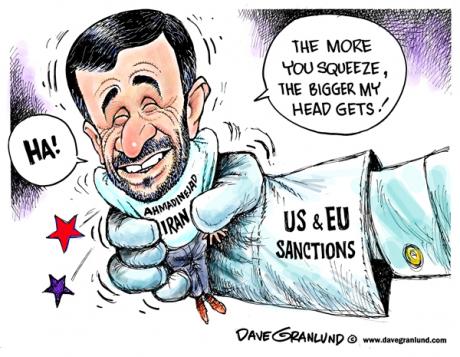
(The better informed everybody becomes the greater the chance that war can be prevented and propaganda can not distort reality. With a couple of clicks you can do your part by simply forwarding this to others.)
__________________________________________________________
Iran stocks, rial gain after nuclear talks
Reuters
One day in late November, an unmanned aerial vehicle lifted off from Shindand Air Base in western Afghanistan, heading 75 miles toward the border with Iran. The drone’s mission: to spy on Tehran’s nuclear program, as well as any insurgent activities the Iranians might be supporting in Afghanistan.
The drone that was headed toward Iran, the RQ-170 Sentinel, looks like a miniature version of the famous stealth fighter, the F-117 Nighthawk: sleek and sand-colored and vaguely ominous, with a single domed eye in place of a cockpit. With a wingspan of 65 feet, it has the ability to fly undetected by radar. Rather than blurting out its location with a constant stream of radio signals – the electronic equivalent of a trail of jet exhaust – it communicates intermittently with its home base, making it virtually impossible to detect. Once it reached its destination, 140 miles into Iranian airspace, it could hover silently in a wide radius for hours, at an altitude of up to 50,000 feet, providing an uninterrupted flow of detailed reconnaissance photos – a feat that no human pilot would be capable of pulling off.
Not long after takeoff – a maneuver handled by human drone operators in Afghanistan – the RQ-170 switched into a semiautonomous mode, following a preprogrammed route under the guidance of drone pilots sitting at computer screens some 7,500 miles away, at Creech Air Force Base in Nevada. But before the mission could be completed, something went wrong. One of the drone’s three data streams failed, and began sending inaccurate information back to the base. Then the signal vanished, and Creech lost all contact with the drone.
Today, even after a 10-week investigation by U.S. officials, it’s unclear exactly what happened. Had the Iranians, as they would later claim, hacked the drone and taken it down? Did the Chinese help them?
What we do know is that the government lied about who was responsible for the drone. Shortly after the crash on November 29th, the U.S.-led military command in Kabul put out a press release saying it had lost an “unarmed reconnaissance aircraft that had been flying a mission over western Afghanistan.” But the drone wasn’t under the command of the military – it was operated by the CIA, as the spy agency itself was later forced to admit.
Ten days after the crash, the missing drone turned up in a large gymnasium in Tehran. The Iranian military displayed the captured aircraft as a trophy; an American flag hung beneath the drone, its stars replaced with skulls. The drone looked nearly unscathed, as if it had landed on a runway.
The Iranians declared that such surveillance flights represented an “act of war,” and threatened to retaliate by attacking U.S. military bases.
President Obama demanded that Iran return the drone, but the damage was done. “It was like when someone from Apple left a prototype of the next iPhone at a bar,”
Today, the Pentagon deploys a fleet of 19,000 drones, relying on them for classified missions that once belonged exclusively to Special Forces units or covert operatives on the ground. American drones have been sent to spy on or kill targets in Iran, Iraq, Afghanistan, Pakistan, Yemen, Syria, Somalia and Libya. Drones routinely patrol the Mexican border, and they provided aerial surveillance over Osama bin Laden’s compound in Abbottabad, Pakistan. In his first three years, Obama has unleashed 268 covert drone strikes, five times the total George W. Bush ordered during his eight years in office. All told, drones have been used to kill more than 3,000 people designated as terrorists, including at least four U.S. citizens. In the process, according to human rights groups, they have also claimed the lives of more than 800 civilians. Obama’s drone program, in fact, amounts to the largest unmanned aerial offensive ever conducted in military history; never have so few killed so many by remote control.
“What I don’t think has happened enough is taking a big step back and asking, ‘Are we creating more terrorists than we’re killing? Are we fostering militarism and extremism in the very places we’re trying to attack it?’ says Rosa Brooks, a Georgetown law professor who helped establish a new Pentagon office devoted to legal and humanitarian policy.






